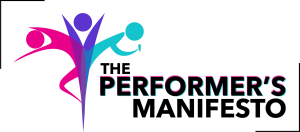This #WellnessWednesday, we’re diving into a training method that many performers may have heard about, dabbled with, but rarely commit to: resistance training.
If you’re like many performers, your go-to fitness routine probably includes cardio—dance classes, jogging, or maybe a fast-paced rehearsal schedule. And if you ever pick up a dumbbell or try a few push-ups, it might feel like a bonus, not a priority. But here’s the thing: without targeted, consistent resistance training, you could be missing out on one of the most effective ways to boost your performance, protect your body, and future-proof your career.
What Is Resistance Training?
Resistance training involves working your muscles against an opposing force—whether that’s free weights, resistance bands, gym machines, or your own body weight. And no, it’s not just for fitness fanatics. It’s for any performer who wants to sing with more control, dance with more power, act with more presence, or simply feel more capable throughout their day.
Why Performers Need Resistance Training
Physical Performance
- Improved strength and stamina for long rehearsal days and energetic performances
- Better posture and core stability, supporting voice, breath control, and movement
- Reduced injury risk through stronger joints, muscles, and connective tissues
- Enhanced flexibility and balance when exercises are performed through a full range of motion
Mental & Emotional Well-being
- Increased confidence from building strength and seeing progress
- Improved focus and cognitive function to handle the demands of the craft
- Reduced stress and improved mood through consistent movement and achievement
Long-Term Health
- Maintains and improves bone density, particularly important as performers age
- Boosts metabolism, supporting sustainable energy and body composition
- Supports functional strength for everyday tasks, making daily life easier on and off stage
Getting Started (No Gym Required)
You can start resistance training with:
- Bodyweight movements (e.g. push-ups, squats, lunges)
- Resistance bands (portable and versatile for home or travel)
- Household objects used as weights (like water bottles or backpacks)
Aim for 2–3 sessions a week, starting with 8–10 exercises that target major muscle groups. Begin with one set of 8–12 reps, and increase over time as you build strength. Prioritise good form over speed or load, and allow for adequate rest between sessions—typically 48 hours for each muscle group.
Consistency Over Complexity
You don’t need to lift heavy or train every day to see results. The key is intentional, regular effort. Resistance training helps you build a strong foundation—so that everything else you do in your career feels easier, more fluid, and more sustainable.
Sources:
This article draws upon information from a range of expert health and fitness sources, including:
- BetterHealth.vic.gov.au
- VeryWellFit.com
- USA Today Health
- nusport.org.au
- The Centers for Disease Control and Prevention (CDC)
- Interviews and insights from qualified fitness and medical professionals cited across these platforms.
Disclaimer
The information provided in this article is intended for general education and wellness purposes only. It is not a substitute for professional medical advice, diagnosis, or treatment. Always consult with your doctor, physiotherapist, or a qualified health professional before starting any new exercise program—especially if you have any pre-existing health conditions or injuries.


